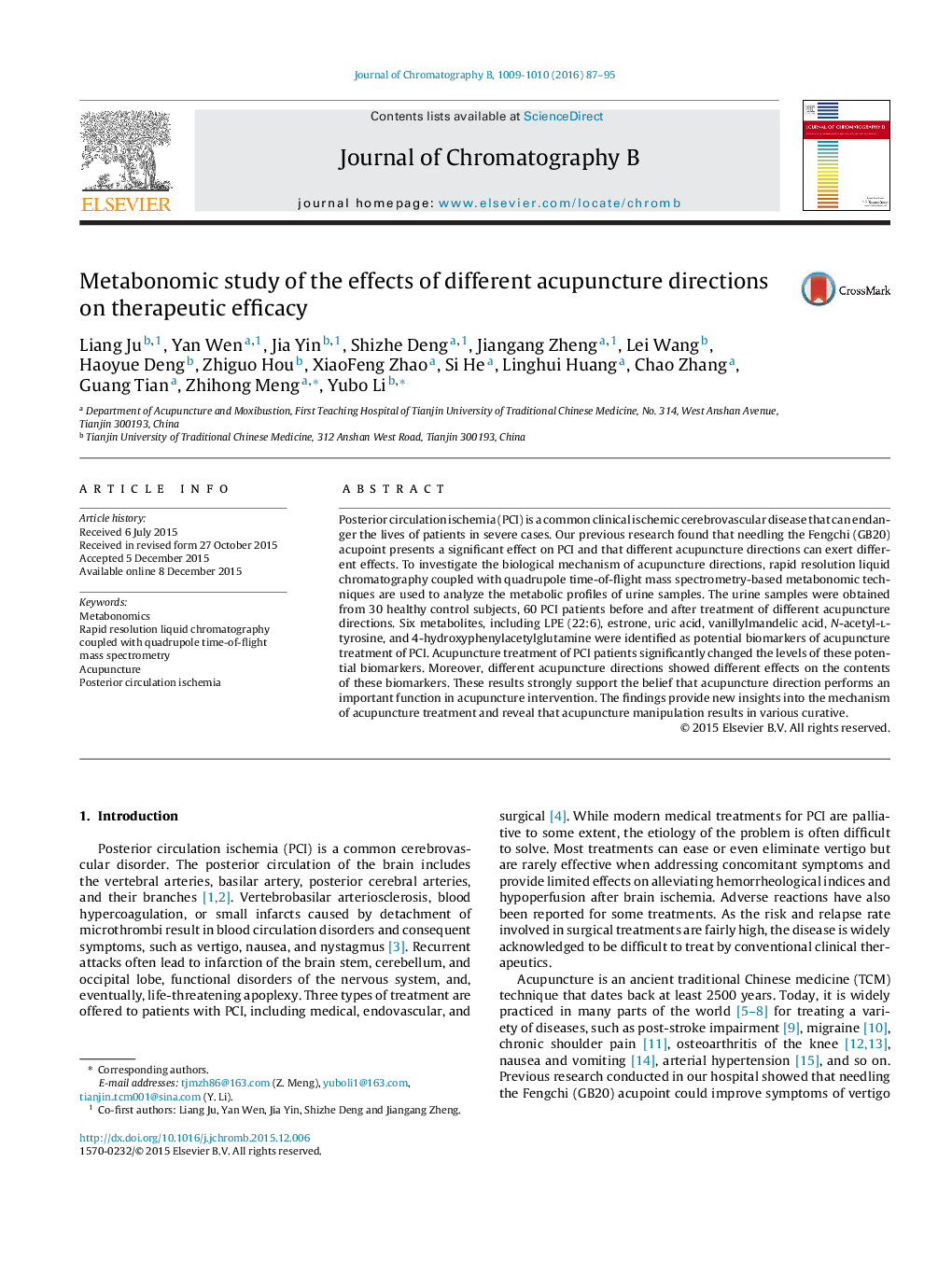| Article ID | Journal | Published Year | Pages | File Type |
|---|---|---|---|---|
| 1214739 | Journal of Chromatography B | 2016 | 9 Pages |
•Metabonomics was used as a supporting tool in mechanism explanation of acupuncture.•A clear tendency of distinction and clustering among the groups was shown.•Potential biomarkers related to PCI were figured out.•Metabonomics was used to discuss the reason why different acupuncture manipulations result in different curative effects.
Posterior circulation ischemia (PCI) is a common clinical ischemic cerebrovascular disease that can endanger the lives of patients in severe cases. Our previous research found that needling the Fengchi (GB20) acupoint presents a significant effect on PCI and that different acupuncture directions can exert different effects. To investigate the biological mechanism of acupuncture directions, rapid resolution liquid chromatography coupled with quadrupole time-of-flight mass spectrometry-based metabonomic techniques are used to analyze the metabolic profiles of urine samples. The urine samples were obtained from 30 healthy control subjects, 60 PCI patients before and after treatment of different acupuncture directions. Six metabolites, including LPE (22:6), estrone, uric acid, vanillylmandelic acid, N-acetyl-l-tyrosine, and 4-hydroxyphenylacetylglutamine were identified as potential biomarkers of acupuncture treatment of PCI. Acupuncture treatment of PCI patients significantly changed the levels of these potential biomarkers. Moreover, different acupuncture directions showed different effects on the contents of these biomarkers. These results strongly support the belief that acupuncture direction performs an important function in acupuncture intervention. The findings provide new insights into the mechanism of acupuncture treatment and reveal that acupuncture manipulation results in various curative.
